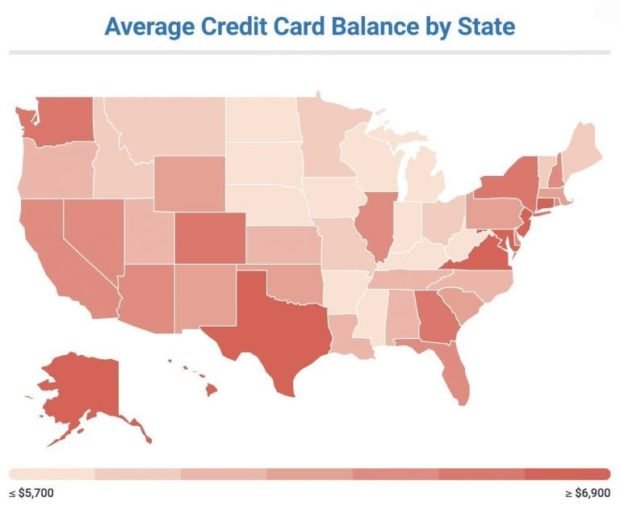Alaska, Connecticut Hold Highest Average Credit Card Balances; Iowa and Wisconsin Lowest

An Austin, Texas company released a study Wednesday that reveals which U.S. states hold the most credit card balances relative to the average incomes residents in those states earn.
The Upgraded Points study underscores that an average 41.2 percent of Americans do not pay off their balances in full each month. Upgraded Points used the data compiled from each state to create both a chart and an interactive, visual map of the U.S., allowing readers to view the data for themselves.
“We analyzed how big of a balance the average person in each state carries on their credit card, as well as how much credit they use as a percentage of their annual income. The results were sometimes surprising — states that held the most credit card debt were not always the states we would have guessed,” said Upgraded Points Founder, Alex Miller.
Some of the credit card balance results from the study revealed that:
- Alaskans easily hold the highest average credit card balance at $8,515; the next closest is Connecticut at $7,258.
- States in the Midwest tend to have the lowest average credit card balances — though there are exceptions.
- States with the lowest credit card balances are Iowa and Wisconsin, with an average of $5,155and $5,363 respectively.
When UP looked into which states hold the highest credit card balances as a percentage of average income, the results were somewhat different:
- New Mexico residents had the most credit card debt as a percentage of income, coming in at 16.19 percent. The second-highest state was Georgia, with 15.43 percent.
- States that boast higher average incomes (New York, New Jersey, Connecticut and California for example) generally have residents who carry a lower amount of credit card debt relative to those incomes. Essentially: residents there use credit cards more, but individuals in these states tend to be better positioned to pay those balances off in full each month.
- Americans in the Midwest tend to use credit cards responsibly, with numbers that place them in the bottom half of national credit card debt as a percent of their income. They use credit cards less, and if they do use them, they generally keep those balances at a manageable level.
- Washington D.C. and Massachusetts have the overall lowest credit card debt as a percentage of income at 9.04 percent and 9.60 percent respectively.
The final results of the study were fairly clear: the average American has a high amount of credit card debt in relation to their income — around 9 percent. UP estimates that average Americans only receive 8.3 percent of their monthly income after all living expenses are paid. If American credit card debt is then over 8.3 percent, it is thus impossible to pay off that debt with income alone. This is the reality in which most Americans find themselves. They are forced to either use their savings to pay off debt, or be in the unenviable position of carrying a balance.
Concerning the debt-problem overtones of this current research, UP notes that: “Having a credit card balance isn’t an issue as long as you pay it off in full every month. But when you have a high amount of credit card debt relative to your income, then you might fall into a situation where you can’t pay off your credit cards. That’s when credit can get you in trouble!”
UP routinely uses such credit card studies as a way to improve its own client services. An innovative travel company, UP explores the myriad ways that accumulated points and miles might be better purposed to help travelers.



